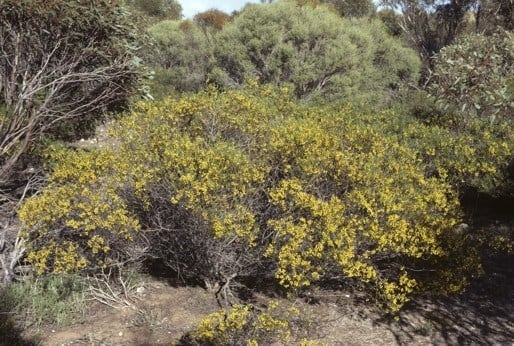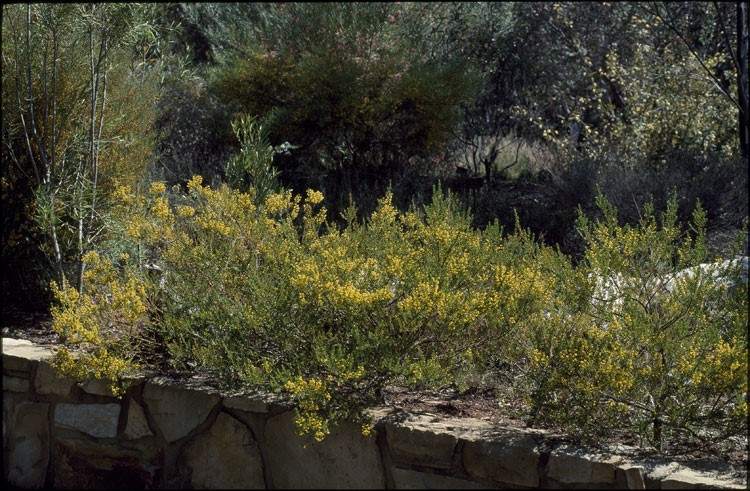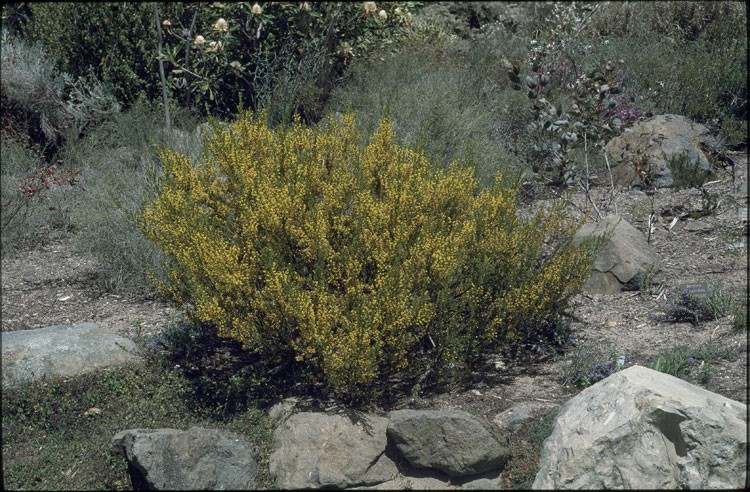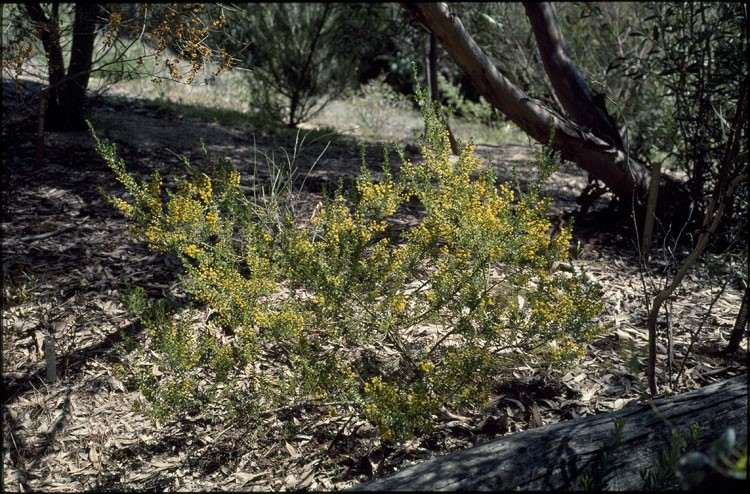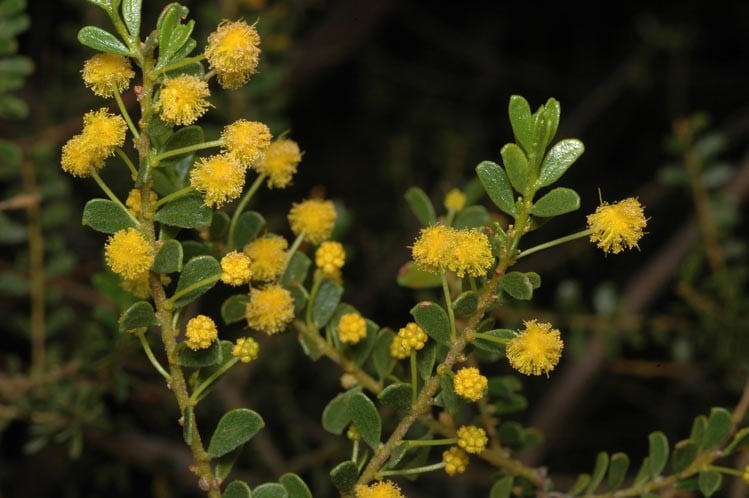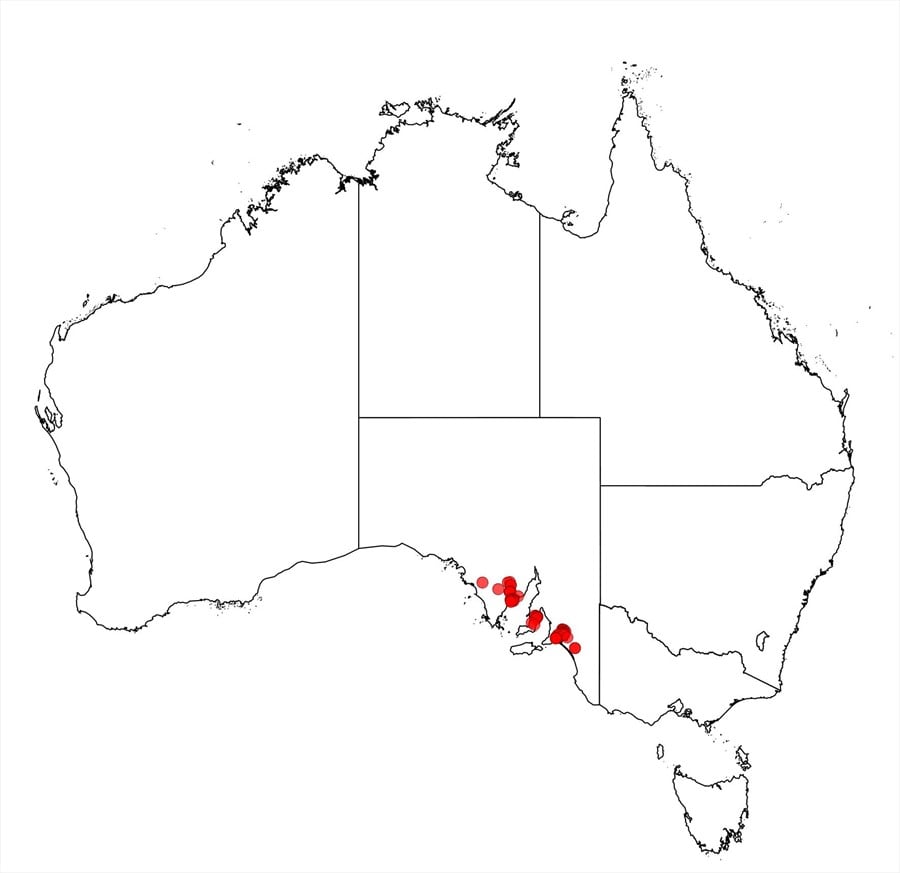Acacia rhetinocarpa J.M.Black
WATTLE
Acacias of Australia
Family
Fabaceae
Distribution
Discontinuous, occurring in the Arno Bay area, Eyre Peninsula, the Curramulka area, Yorke Peninsula, and between Gilberts and Monarto South, S.A.
Description
Resinous shrub 0.5–2 m high. Branchlets terete, sparsely hairy. Phyllodes on short stem-projections, inequilaterally obtriangular-obovate to widely obovate-obdeltate, 2–5.5 mm long, 1.5–3.5 mm wide, rounded and excentrically thick-apiculate at apex, slightly thickened, sometimes obviously glandular-punctate, glabrous; midrib obscure or absent; lateral nerves normally absent; gland small, 1–2 mm above pulvinus. Inflorescences simple, 1 per axil; peduncles 4–7 mm long, slender, glabrous; basal bract persistent; heads globular, 12–15-flowered, golden. Flowers 5-merous; sepals 1/4–1/2-united. Pods curved to subtortuous, 1–3.5 cm long, 2–3 mm wide, thinly coriaceous, glabrous. Seeds longitudinal, oblong, 3.5 mm long, slightly shiny, brown; aril galeiform, partially sheathing end of seed.
Habitat
Usually grows in open scrub in calcareous sand or sandy loam.
Specimens
S.A.: 33 km SW of Cowell towards Arno Bay, J.D.Briggs 554 (AD); 11 km S of Monarto South on the road to Ferries–McDonald Conservation Park, B.R.Maslin 5975 (AD, PERTH); Curramulka road W of Pine Point, 31 Aug. 1976, W.L.Quinn s.n. (AD).
Notes
Related to A. glandulicarpa which has 2-nerved phyllodes broadest below or near the middle and densely pilose pods. Phyllode shape and size may be similar to some forms of A. acinacea which is a non-resinous shrub further distinguished by its gland-bearing phyllode apices and free sepals. Superficially similar to A. brachyclada from W.A.
Conservation
Regarded as a vulnerable species by J.Leigh et al., Rare Threatened Austral. Pl. 84 (1981).
FOA Reference
Data derived from Flora of Australia Volumes 11A (2001), 11B (2001) and 12 (1998), products of ABRS, ©Commonwealth of Australia
Author
B.R.Maslin
This identification key and fact sheets are available as a mobile application:
URL: https://apps.lucidcentral.org/wattle/
© Copyright 2018. All rights reserved.
